- Call us: 01444 237070
- Contact Us
- Stores
- Sign In / Register
-
- Back
- Used Cameras
- Used Lenses
- Used Video
- Used Film Equipment
- Used Stock Alert
- Used Accessories
- Recently Added Used Equipment
- Used Clearance
- Faulty
- Park Picks
- Sell or Part Exchange
- Trade-In
- Blog
- New in
- Call us
- Contact us
- Stores
- Sign in
- Categories
- Tips & Inspiration
- Reviews
- News
- Events
- Features
- Buying Guides
- Competitions
Nikon Z6 III Review
The next-generation Nikon Z6 III camera is Nikon’s latest full-frame mirrorless Z body to hit the market, and this third generation inherits a number of features from flagship models in the range. The mid-range body for pros and enthusiasts upholds its hybrid legacy, combining first-rate stills capabilities with pro-level video recording, new audio features, and more.
Nikon Z6 III First Look Video
Our first look Nikon Z6 III Review explores whether the new camera is perfect for your photo and video content creation, who should upgrade, and compares key specs with the previous Z6 II camera. Let’s get started by exploring pricing, lens kits, and the release date of this highly anticipated FX (full-frame) Nikon body for hybrid creators.

When was the Nikon Z6 III released?
In an unusual step, Nikon teased the Z6 III on 10 June 2024; however, the camera became available to order a week later on 17 June 2024. This is nearly four years since its Mark II predecessor was released on 14 October 2020, which had a big impact on the market.

Sample image 01 macro with Z MC 105mm F/2.8 VR S Macro lens. Camera settings: 1/25sec. f/4.5. ISO 200
Nikon Z6 III Key Features
The Nikon Z6 III is the video-centric mid-range hybrid body from Nikon’s lineup, and the third generation model arrives bursting with new and upgraded features, along with a couple of world-first capabilities. Key features include:
- The world’s first 24.5-megapixel partially stacked CMOS sensor
- Up to 120fps stills photo continuous burst, with PreCapture and up to 240p video
- 5760k high-res, 4000-nits EVF with world’s first DCI-P3 colour gamut in a mirrorless camera
- High-speed EXPEED 7 processor
- Pro-level AF subject tracking inherited from the Nikon Z8
- Autofocus sensitivity down to -10EV
- Up to 8-stops of VR (Vibration Reduction) for stills and video with Focus Point VR from the Z F
- 4K UHD/60p oversampled from 6K
- 6K RAW in-camera
- Line-in audio port and Timecode Sync
- Comprehensively sealed body, inherited from the Z9, which performs down to -10ºC
- Vari-angle LCD display with 2100k resolution
- User-customisable Picture Control System
- Cloud-based backup and sharing
With the new CMOS sensor and latest processor, hybrid creators no longer need to make any compromises when shooting with a Z6-series camera. The Mark 3 includes highly advanced Autofocus made possible by the sensor and processor components, with advanced 3D tracking on par with the Z8.
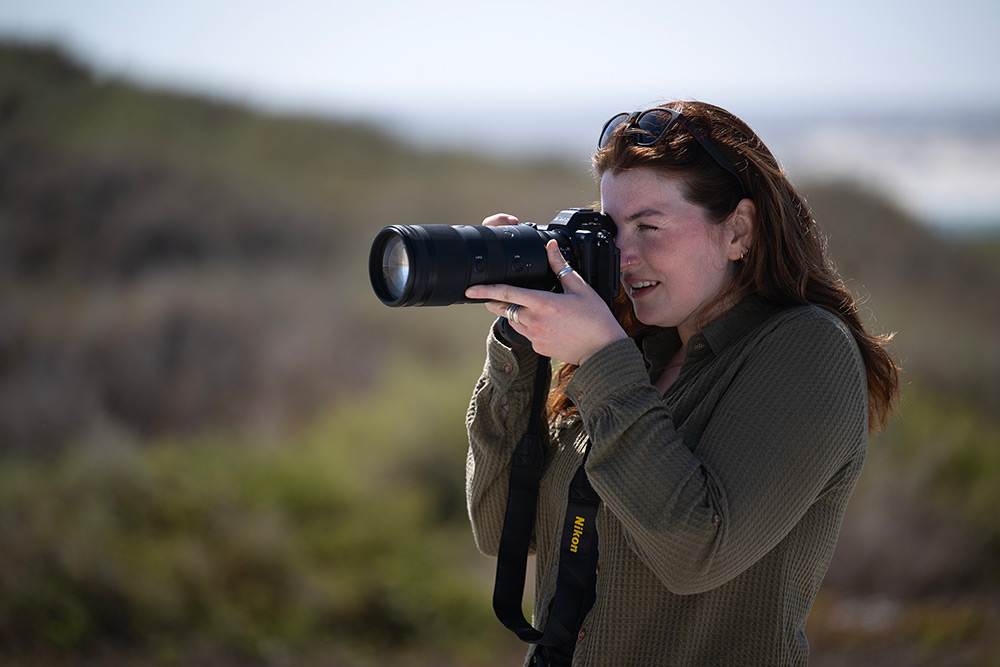
Nikon Z6 II Vs Z6 III Specs Comparison
The following table compares key specifications between the 2nd and 3rd generation Z6 II and Z6 III cameras, highlighting many of the upgraded features, as well as any similarities between these two hybrid cameras.
|
|
||
|
Sensor |
Partially stacked FX, CMOS, 35.9 mm x 23.9 mm |
FX, CMOS, 35.9 mm x 23.9 mm |
|
Recorded pixels |
24.5 million |
24.5 million |
|
Lens mount |
Z mount |
Z mount |
|
Processor |
EXPEED 7 |
Dual EXPEED 6 |
|
Max FPS |
120fps 10MP DX-format (crop) JPEGs with full autofocus and auto exposure 60fps 24MP FX-format (full-frame) JPEGs with full autofocus and auto exposure |
14 frames per second at full resolution with full autofocus and auto exposure |
|
Pre-Release Capture |
Yes (Max 120fps) |
N/A |
|
Storage media |
1 CFexpress card (Type B) or XQD card and 1 Secure Digital (SD) card |
1 CFexpress card (Type B) or XQD card and 1 Secure Digital (SD) card |
|
Viewfinder (EVF) |
1.27-cm/0.5-in. approx. 5760k-dot electronic viewfinder with 60fps refresh rate and 4000-nits brightness |
1.27-cm/0.5-in. approx. 3690k-dot OLED electronic viewfinder with colour balance and auto and 11-level manual brightness controls |
|
low-light AF metering |
-10 EV |
-6 EV |
|
Autofocus |
Hybrid phase-detection/contrast AF with AF assist and deep learning |
Hybrid phase-detection/contrast AF with AF assist |
|
Subject detection AF |
Dedicated people, animals, vehicles and planes |
Dedicated people, animals |
|
3D tracking |
Yes |
N/A |
|
On-board VR |
5-axis image sensor shift and up to 8.0-stops VR with Focus Point VR |
5-axis image sensor shift and up to 5.0-stops VR |
|
Max in-camera video recording |
6K RAW/60p 4K UHD/60p oversampled Full HD 240p |
4K UHD/30p Full HD 120p |
|
Timecode |
Support Ultrasync blue and Atomos AirGlu devices |
LTC timecode, through 3.5mm or USB |
|
Dust and Splash Resistant |
Yes, extensive as Z9 |
Yes |
|
Minimum operating temperature |
-10ºC |
0 °C |
|
Battery |
||
|
Battery grip |
||
|
Weight |
Approx. 750g |
Approx 705g |
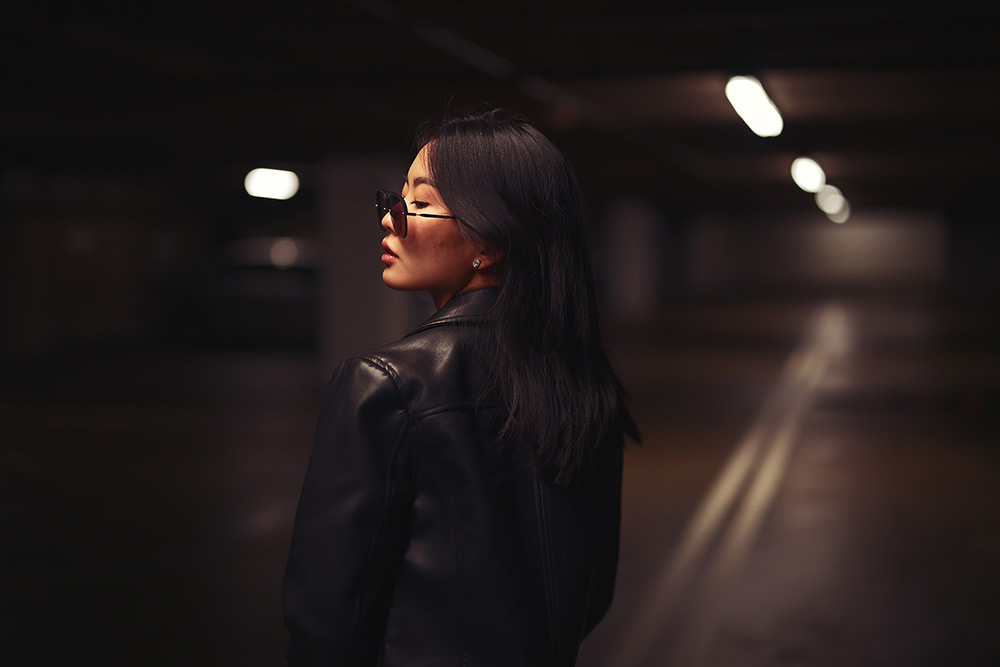
Sample image 02 portrait with Z 50mm F/1.2 S lens. Camera settings: 1/250sec. f/1.2. ISO 320
Although not 100% comprehensive, this table provides a clear indication of how extensive the third-generation upgrades are, with significant improvements to autofocus, the adoption of deep learning AF technology similar to the Z8 and Z9, faster shooting, enhanced in-camera video, and updates to virtually every other aspect.
The unsung heroes include more extensive weather sealing and an ultra-high resolution EVF, which provides a beautifully clear view of the scene ahead, as well as for previewing shots. Having made an initial hands-on Nikon ZF review, I can attest to the success of the Focus Point VR feature, which enables you to link the VR to the focus point where most needed, and in the case of the Z6 gain a class-leading 8.0-stops compensation.
Similarly, when making a Nikon Z8 review, I explored features like the deep learning AF, subject tracking, and 3D tracking, all of which are now available in the smaller and more competitively priced Z6 III. In Nikon’s case, technology really is trickling down from high-end cameras to far more accessible models, which is great news for content creators who adopt the Z system.
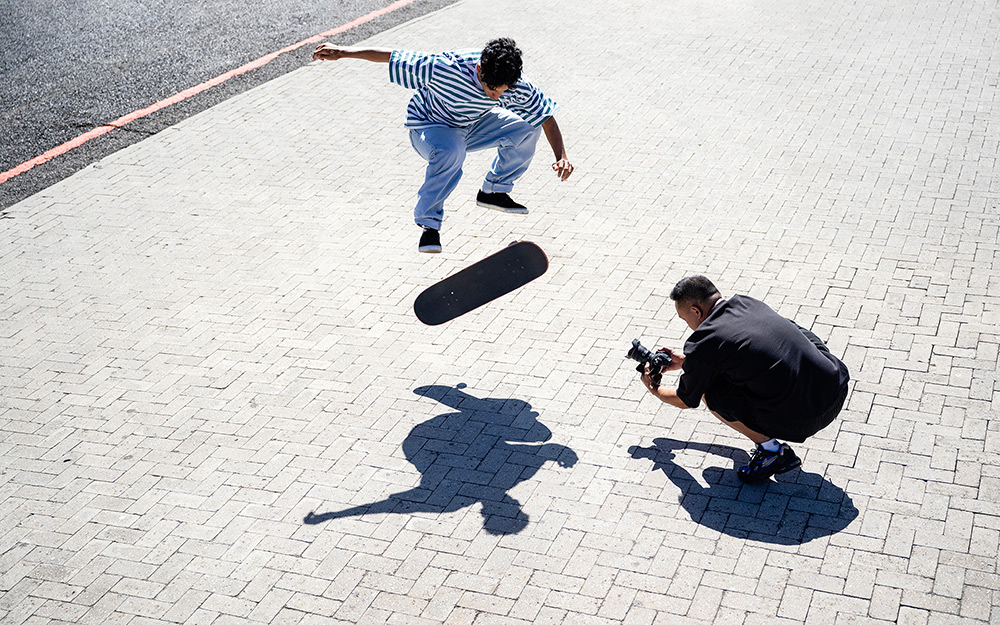
Upgraded Autofocus
Thanks to its new partially stacked full-frame CMOS sensor and processor combination, the Z6 III delivers significantly improved AF performance with Phase Detection Autofocus, deep learning technology, 3D tracking, and more. Photographers and videographers will notice significantly improved AF with the Z6 III adopting the very latest deep learning technology for subject recognition and tracking. More subjects are now recognised, and the phase detection system operates in very dim environments, right down to -10EV, which caters for moonlit nights and similarly low-light situations.
Which Video Formats and Resolutions does the Z6 III include?
Having captured hybrid users and video creators attention with the Z9 and Z8’s impressive video capabilities, Nikon is extending their know-how to the Z6 III. It offers a huge range of video formats and resolutions, including in-camera 6K/60p (RAW), 5.4K/60p (YUV) and 10x slow motion with 240p.
A wide range of codecs include N-RAW, ProRes RAW HQ, ProRes 422 HQ, H.265 (HVEC), and H.264 (AVC), catering tool sorts of high-resolution needs.
In-camera 4K/60p UHD from oversampled 6K is also available, and you can record footage over full size HDMI in 12-bit RAW and 10-bit Log recording. Whatever video project you have the Z6 III is able to produce sharp, smooth and wide dynamic range footage for your needs.
On top of comprehensive video capabilities is robust audio, with an external mic input, which can be used as a line-level input for interviews and live recordings. Furthermore, the camera supports Ultrasync Blue, which synchronises timecode over Bluetooth, allowing the Z6 III to be used for multi-cam productions and to sync with audio recorders and other devices that support Atomos AirGlu. These features further extend the versatility of the Z6 III for content creators of all levels, whether solo creators or production teams.

Sample image 03 - No Exif data
VR and Focus Point VR
Nikon first introduced Focus Point VR with the Z F camera, enabling users to concentrate the 5-axis IBIS around the focus point. This innovative solution is adopted by the Z6 III and maintains sharp results, as our eyes typically seek sharpness on the subject rather than the background. The result is up to 8.0 stops of compensation against vibration for both stills and E-VR for video, placing the Z6 III firmly at the top of its class and enabling users to shoot at significantly slower speeds while still achieving sharp results.
Usability and Ergonomics
At 750g, the Nikon Z6 III is slightly heavier than its predecessor, although still considerably smaller and lighter than the Z8 and Z9, as well as being purposefully built for a cage or stabiliser. Nikon menus are intuitive and easy to navigate, and a dedicated red record button on the top plate cements this as a hybrid model.
A top LCD information panel provides an instant view of key camera settings, and there are plenty of easily accessible controls, including an exposure compensation button that works in tandem with the rear command dial and is quick to use.
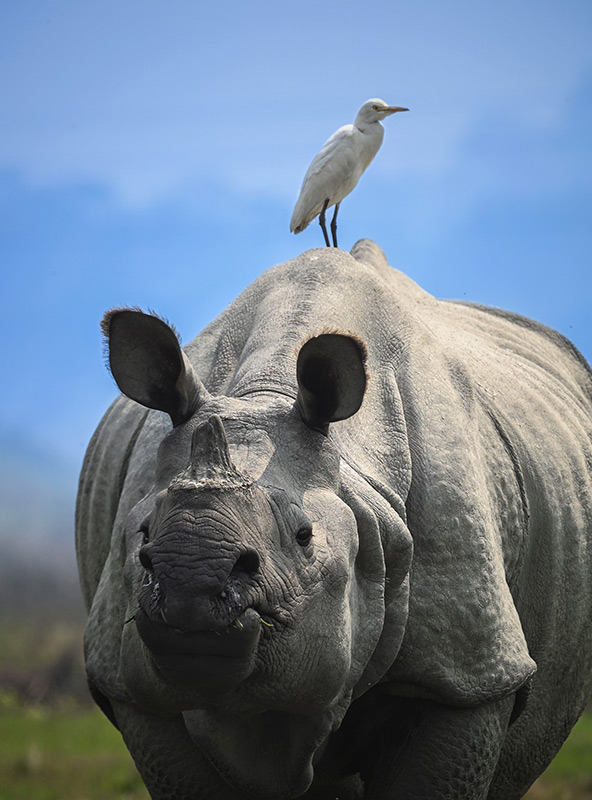
Sample image 04 - No Exif data
To further extend usability, you can add the Nikon MB-N14 Power Battery Grip, which makes the body more comfortable to grip in a vertical orientation, adds additional power, and balances the camera when using telephoto lenses.
The operating temperature has increased from 0 to 40°C in the previous model to -10ºC with the new Z6 III, enabling operation in far colder environments and enhancing overall weather resistance to the same level as the Z9, which is well known for its extensive sealing. This provides an additional layer of security for users who shoot in extreme conditions, ensuring the Z6 III is better suited to adventure photography, wildlife, and winter sporting events.
What are the best accessories for the Z6 III?
The optional MB-N14 Power Battery Grip is a must-have accessory for those who shoot studio, portraits and subjects which require frequent vertical orientation of the camera. It takes additional EN-EL15c batteries, which are useful to have, regardless of whether using the battery grip.
Other accessories include one of the many an external camera microphones, which are available from Rode, Saramonic, Sennheiser and other audio brands. Along with a microphone the Z6 III accepts the Nikon Remote Grip MC-N10, which adds camera control to a larger handgrip, as well as the FTZ Mark II Lens Mount Adapter, which brings us to lens compatibility.
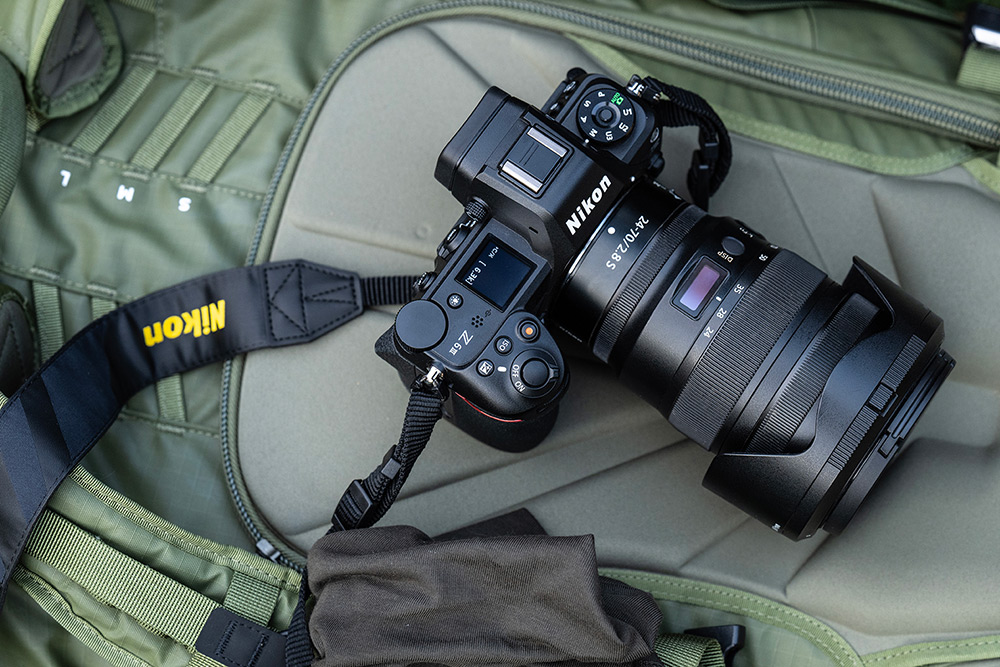
Lens Compatibility
Nikon has developed a broad range of full-frame (FX) mirrorless Z mount lenses for creators who utilise the mirrorless system. This ensures you can find everything from state-of-the-art prime lenses such as the Nikon Z 135mm F/1.8 S Plena, to cost-effective zooms like the Z 24-50mm F/4-6.3.
Third-party options further expand the Z mount range, which include lenses from Laowa, Voigtlander, Viltrox, and Tamron, catering to every subject and skill level. Additionally, you can mount AF DSLR F-mount lenses and legacy manual Nikkor lenses with the FTZ lens mount adapter mentioned earlier.
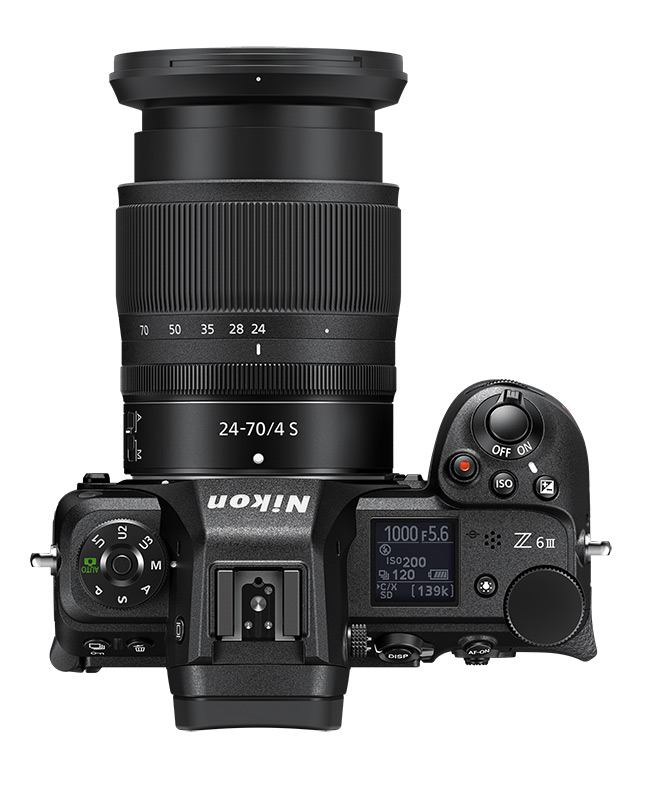
Who is the Nikon Z6 III camera for?
The Nikon Z6 III is ideal for enthusiasts, hybrid creators, and professional photographers who require the latest autofocus, high-end imaging, robust build, and versatile shooting without the size or price of a Z8 or Z9. It suits challenging environments, whether for adventure photography, wildlife, sports, or studio work.
The camera provides a significant leap in performance to anyone upgrading from a previous generation Z6, and is also perfect for creators looking for state-of-the-art video capabilities in a portable form, without making any compromises on stills performance.
Reserve your Nikon Z6 III body today, or choose the Nikon Z6 III Camera with Z 24-70mm f/4 S Lens Kit or Z6 III with Z 24-120mm f/4 S Lens to jump start your content creation with a versatile zoom lens.
If upgrading, you can get a fast and free quotation and sell your camera to us, using the money to offset against the cost of the powerful third generation hybrid from Nikon.
Share this post:
By Nick Dautlich on 17/06/2024

Trade in your old equipment
Fast and easy trade in service ensures your old gear is collected efficiently and you are paid quickly! It's very simple to trade in your unwanted photography gear. Just head over to our dedicated Sell or Part Exchange page, fill out the details, and we'll get back to you with an offer for your old gear. Take the cash, or put it towards the cost of your new gear. It's up to you! Find out more
sign up to the newsletter
Keep up to date on the latest photography news, events and offers. Sign up now
